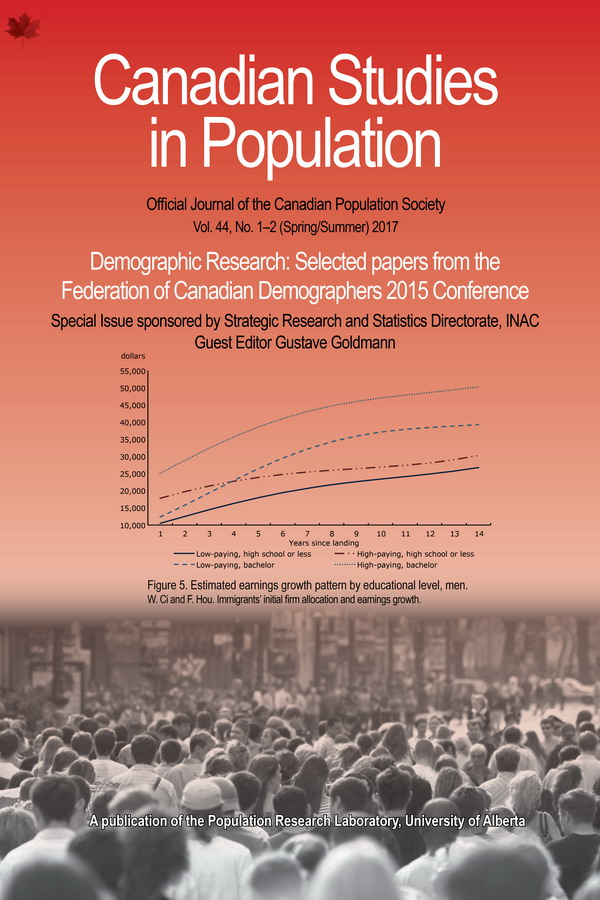Changing BMI scores among Canadian Indigenous and non-Indigenous children, youth, and young adults: Untangling age, period, and cohort effects
DOI:
https://doi.org/10.25336/P6HK5DKeywords:
age-period-cohort analysis, BMI, CCHS, Canada, obesityAbstract
The objective of this study was to examine age, period and cohort effects on BMI among Indigenous and non-Indigenous populations, using repeated cross-sectional survey data from the CCHS (2001 to 2014). Cross-classified random-effect two-level models were used to estimate fixed effects for age and its quadratic term (Level 1), and also to estimate random effects for time periods and birth cohorts (Level 2), while controlling for the effects of Level 1 control variables: sex, model of interview and response by proxy. Overall, the results support the hypothesis that age and period effects are primarily responsible for the current obesity epidemic.
L’objectif de cette étude était d’examiner les effets de l’âge, de la période et de la cohorte sur l’IMC chez les populations autochtones et non autochtones, en utilisant des données d’enquêtes transversales répétées de l’ESCC (2001 à 2014). On a utilisé des modèles à deux niveaux à effets aléatoires croisés pour estimer les effets fixes pour l’âge et son terme quadratique (niveau 1), et également estimer les effets aléatoires pour les périodes et les cohortes de naissance (niveau 2), tout en contrôlant les effets du niveau 1 Variables de contrôle: sexe, modèle d’interview et réponse par procuration. Dans l’ensemble, les résultats confirment l’hypothèse selon laquelle les effets de l’âge et de la période sont les principaux responsables de l’épidémie actuelle d’obésité.
Downloads
Published
Issue
Section
License
Copyright (c) 2019 Piotr Wilk, Alana Maltby, Martin Cooke

This work is licensed under a Creative Commons Attribution 4.0 International License.
The following copyright statement applies to content published in Volumes 1 - 45 of Canadian Studies in Population.
Authors retain copyright and grant the journal right of first publication with the work simultaneously licensed under a Creative Commons Attribution License that allows others to share the work with an acknowledgement of the work's authorship and initial publication in this journal.
Authors are able to enter into separate, additional contractual arrangements for the non-exclusive distribution of the journal's published version of the work (e.g., post it to an institutional repository or publish it in a book), with an acknowledgement of its initial publication in this journal.
Authors are permitted and encouraged to post their work online (e.g., in institutional repositories or on their website) prior to and during the submission process, as it can lead to productive exchanges, as well as earlier and greater citation of published work (See The Effect of Open Access).



